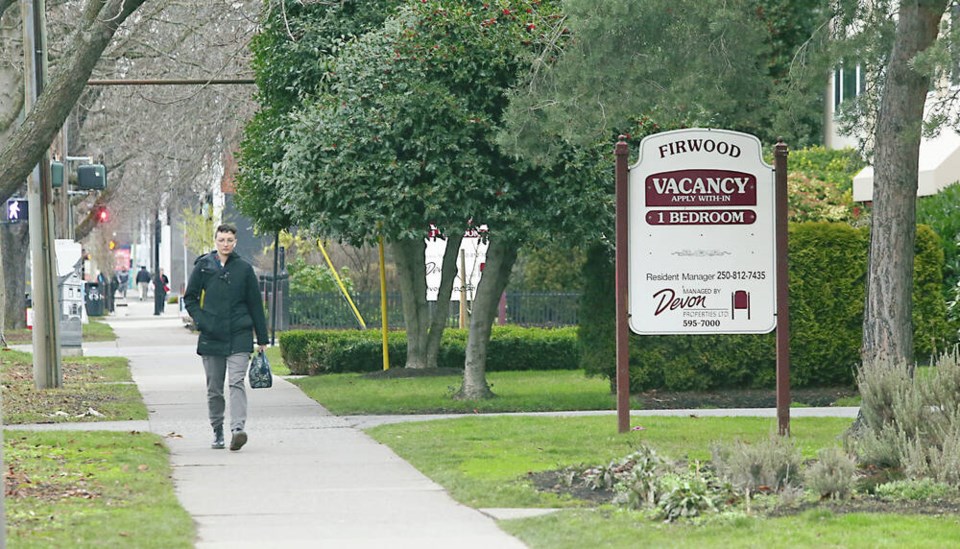Rent for the average Greater Victoria two-bedroom apartment that saw tenant turnover in 2022 rose by a third, Canada Mortgage and Housing’s latest annual rental market report shows.
That sharp increase helped drive up the average cost of renting a two-bedroom unit in a purpose-built rental apartment by 6.7 per cent from 2021, to $1,699 a month.
The rent increase from tenant to tenant is “pretty shocking,” said Doug King, executive director of the Together Against Poverty Society, who says the society is seeing more evictions that appear to be driven by the prospect of charging higher rental rates.
“There’s a human cost for that that often isn’t covered by reports and that’s what we see.”
CMHC’s report highlights the ongoing difficulties facing renters in the capital region, where despite plenty of new construction, affordable rental units continue to be hard to find. Vacancy rates are historically low and rents are climbing.
This is the first renter market report that includes changes in rental rates when a unit changes hands.
TAPS is calling on the province to enact rental-market controls prohibiting landlords from increasing rental rates between tenants beyond the permitted two per cent annual increase.
It’s also recommending that an application process be introduced for landlords to get permission to evict a tenant to make way for the owner or a close family member.
The issue is becoming more of a concern as family companies take over small apartment buildings in the capital region, King said.
Greater Victoria’s vacancy rate for purpose-built rental apartments remains one of the lowest in Canada at 1.5 per cent, up slightly from one per cent in 2021.
Record-high supply growth helped alleviate rental-market tightness while rising demand accelerated rent increases, said Pershing Sun, a senior analyst with CMHC and author of the Victoria chapter in the report.
Last year brought a net increase of 1,411 units in purpose-built rental-apartment units in the capital region, as well as 229 condominiums for rent, she said. Both those categories grew by more than twice what was seen in 2021.
At the same time, “significantly fewer” purpose-built rental apartments were removed from the stock as a result of demolitions, conversions or renovations, she said, and many units taken out of the pool in 2021 for renovations returned to the market in 2022.
For those hoping to rent a condominium unit, the vacancy rate is lower, at 0.2 per cent, and the average rent for a two-bedroom unit is higher at $2,321.
When all types of rental units were taken into account, from studios to three-bedrooms, the average rate for purpose-built rental stock in the capital region was up by 7.7 per cent, the fastest growth in more than three decades, Sun said.
Vacancy rates for housing considered affordable — meaning tenants put no more than one-third of their income toward rent — come in at below one per cent.
For households bringing in less than $49,000 annually, the vacancy rate was 0.4 per cent for an affordable unit, Sun said.
Just one-third of purpose-built rental units were affordable for households earning less than $49,000 annually.
The market is tough for families. The vacancy rate was 0.8 per cent for three-bedroom affordable units for households earning below $75,000 per year.
Ana-Maria Noronha, a part-time student, has been hunting for a new place since late 2022. With a budget of up to $1,200 per month, including utilities, she said the market for either a single unit or shared space is expensive and competitive.
She is looking for a place immediately. “It is time consuming, energy consuming.”
Sun said higher immigration numbers and stable job growth helped fuel demand for rental units last year, and newcomers will likely continue to drive rental demand, since the federal government’s immigration targets are set progressively higher each year until 2025.



